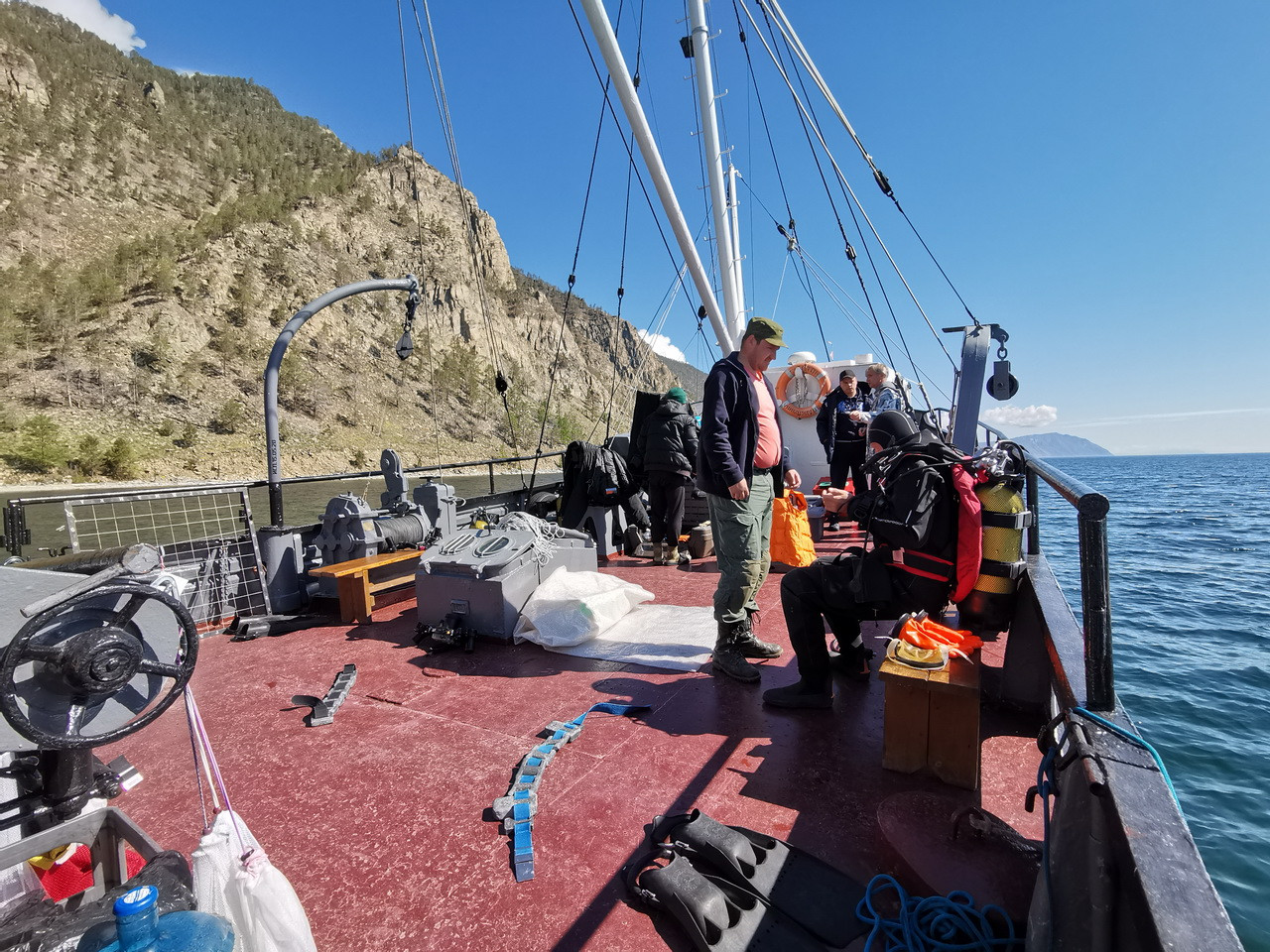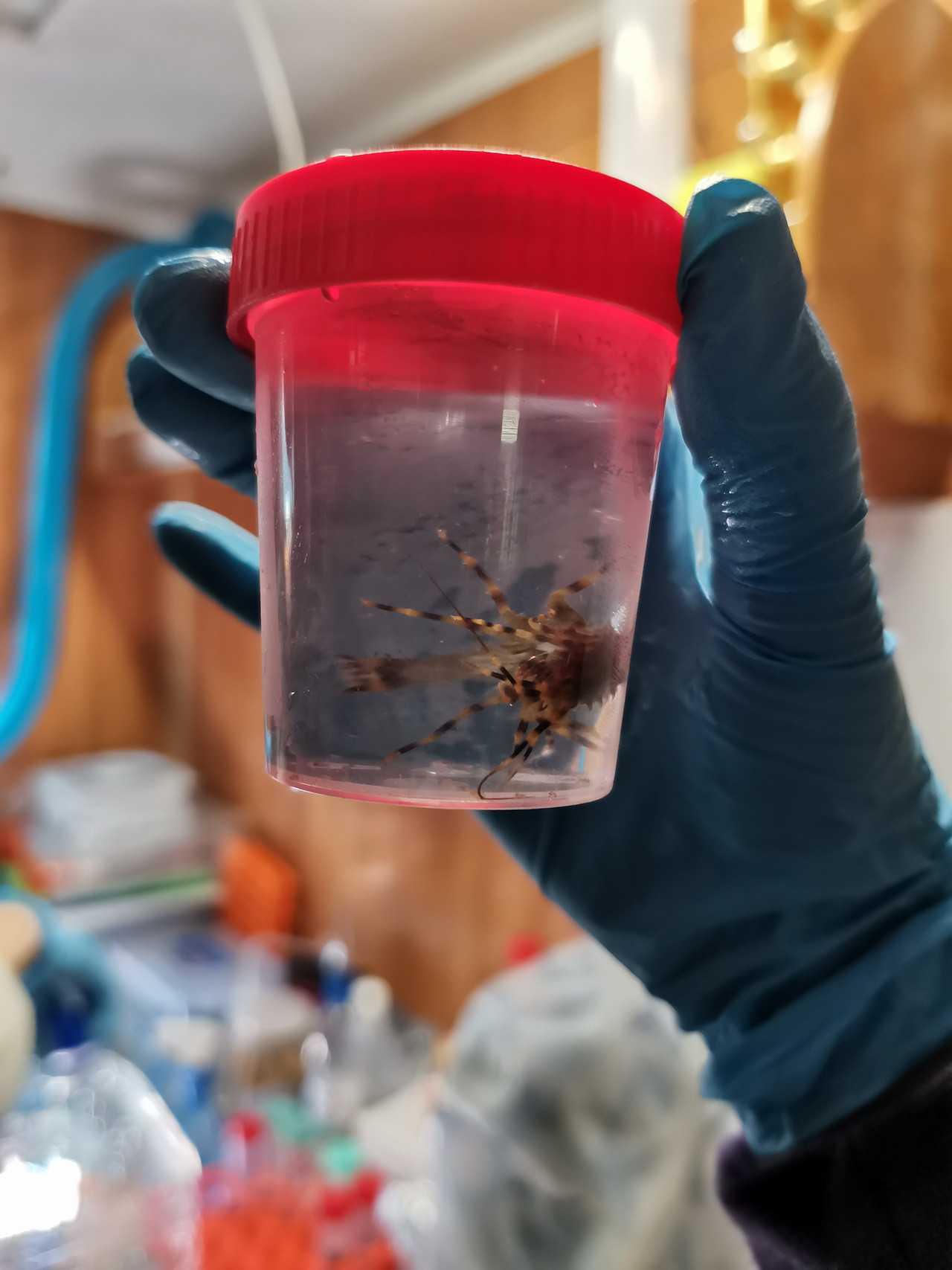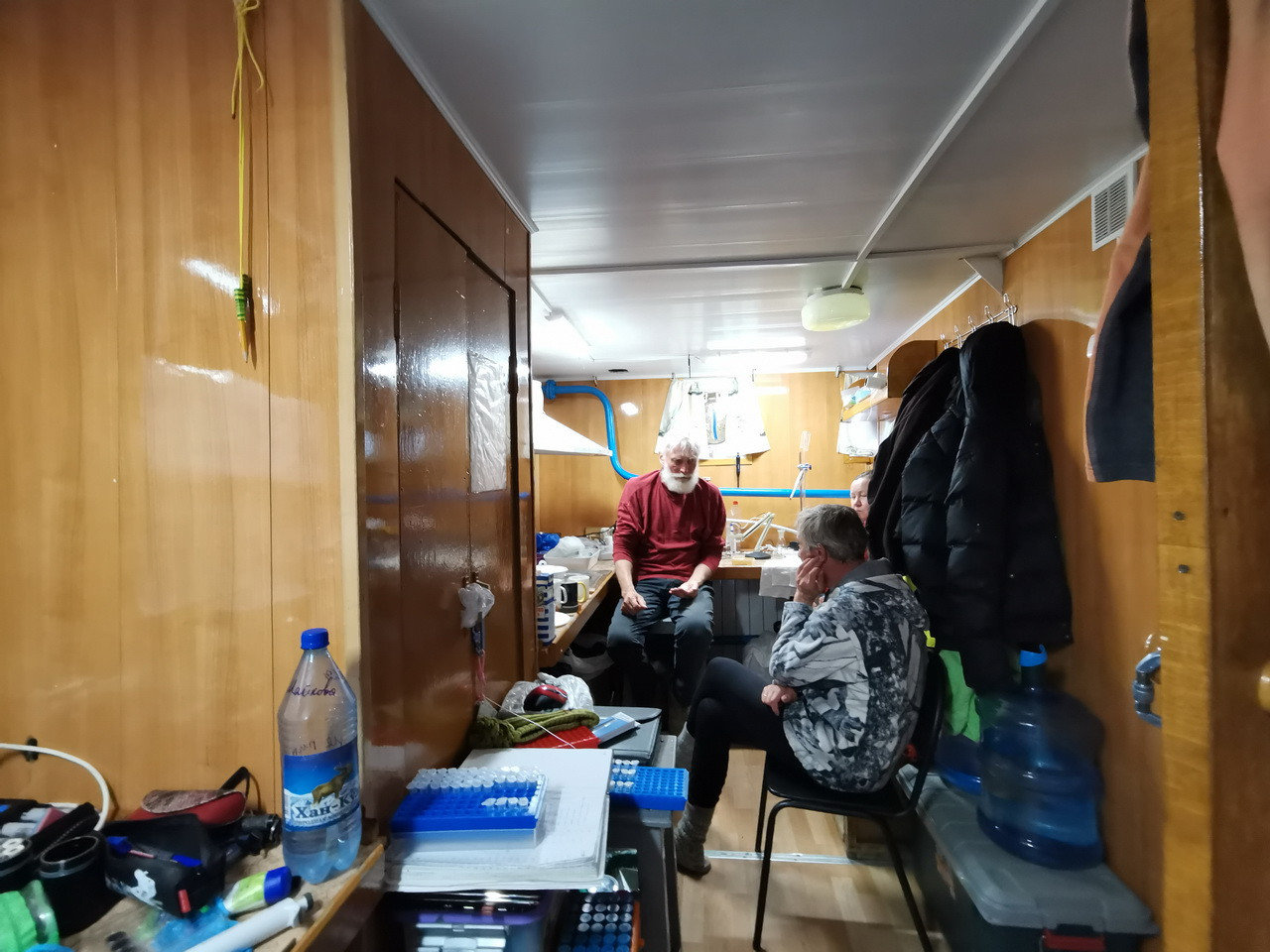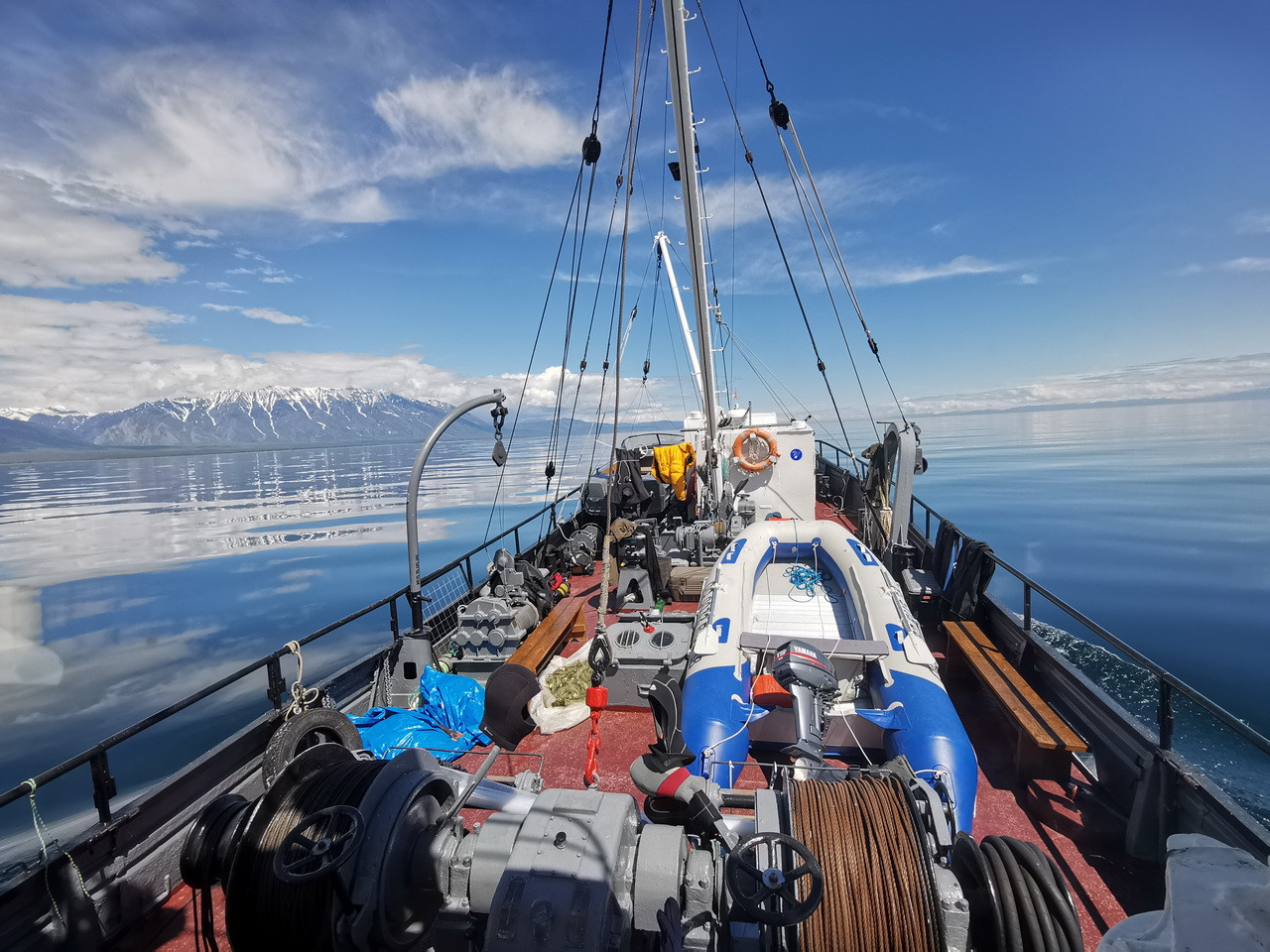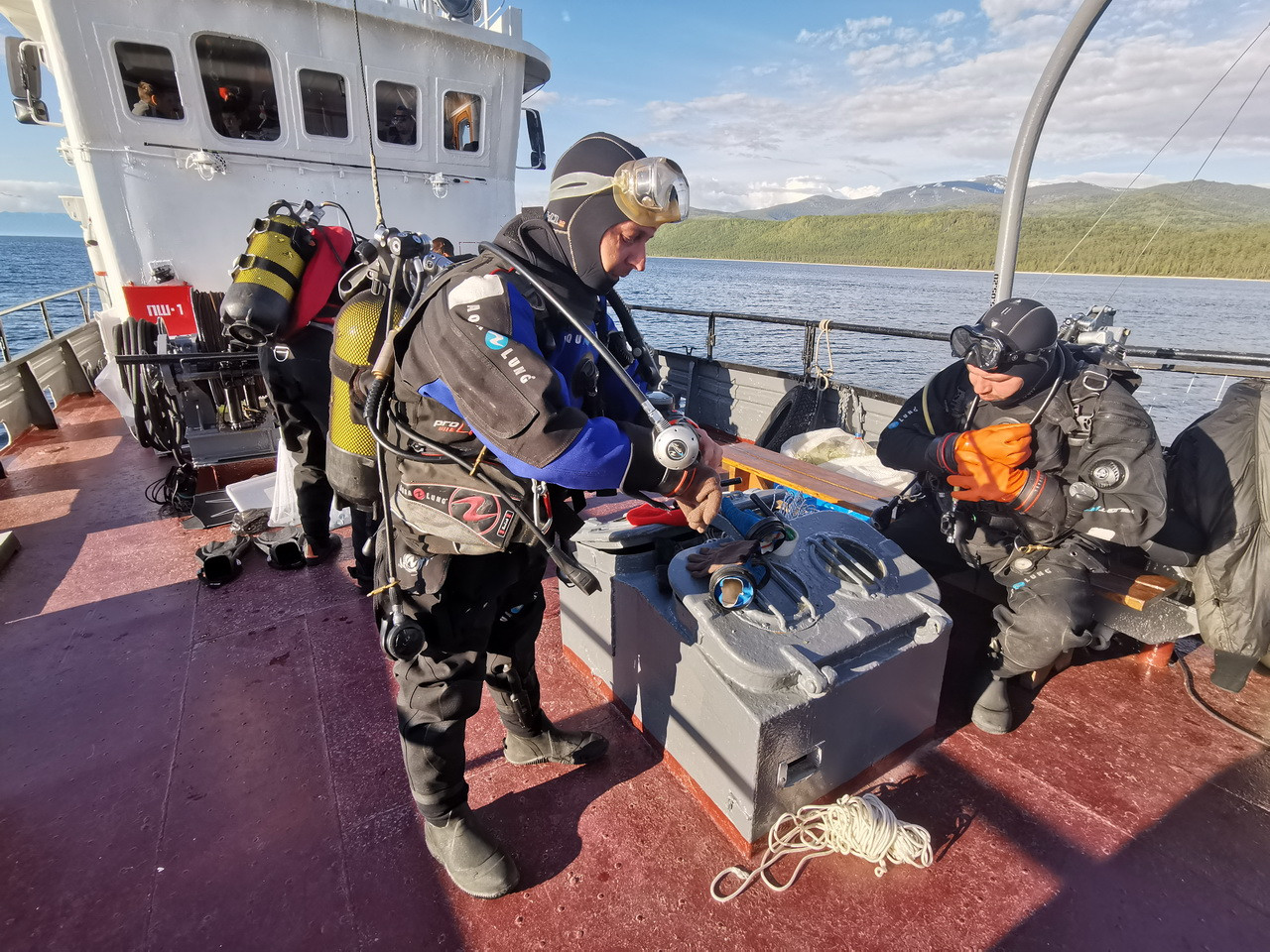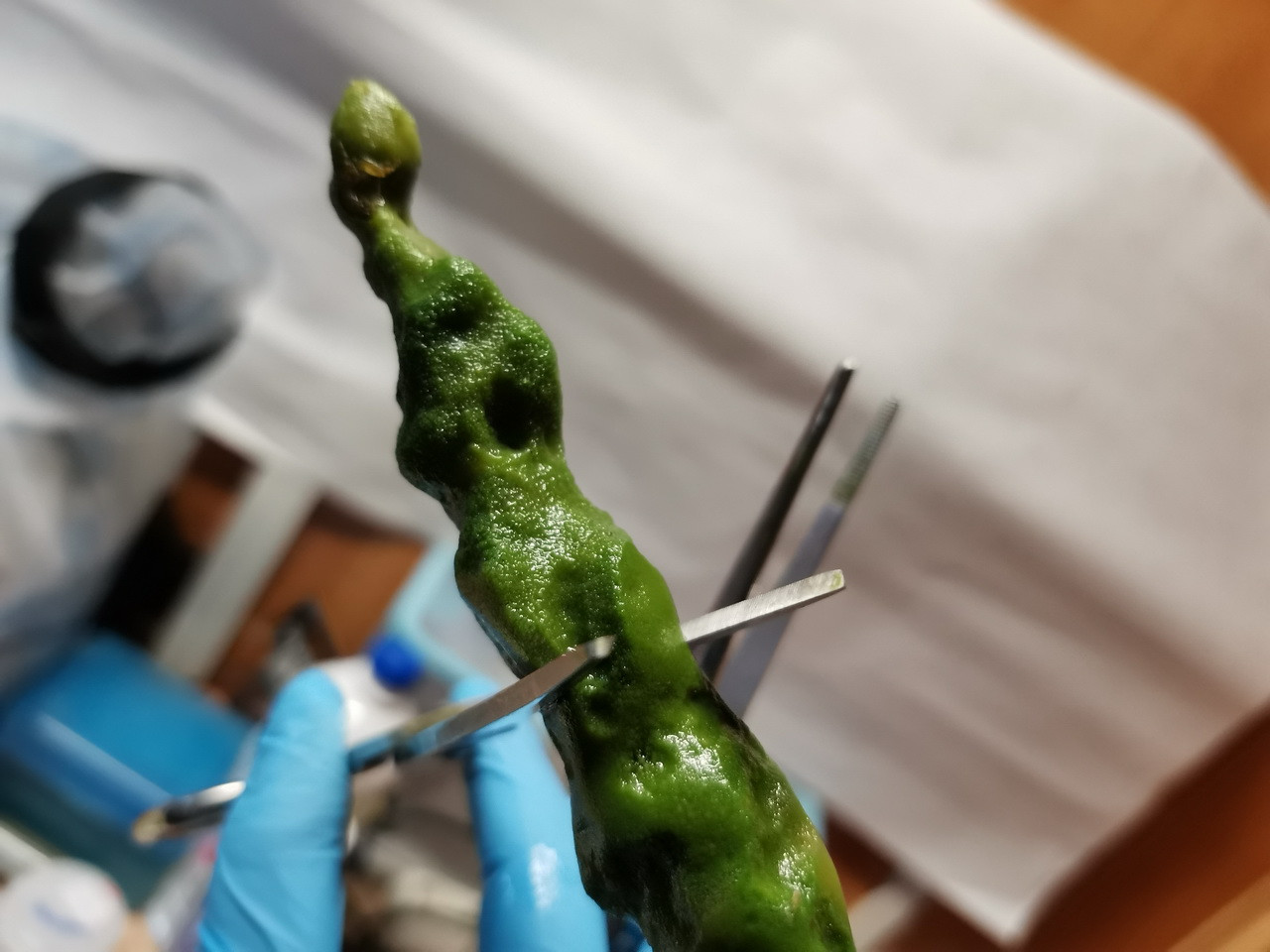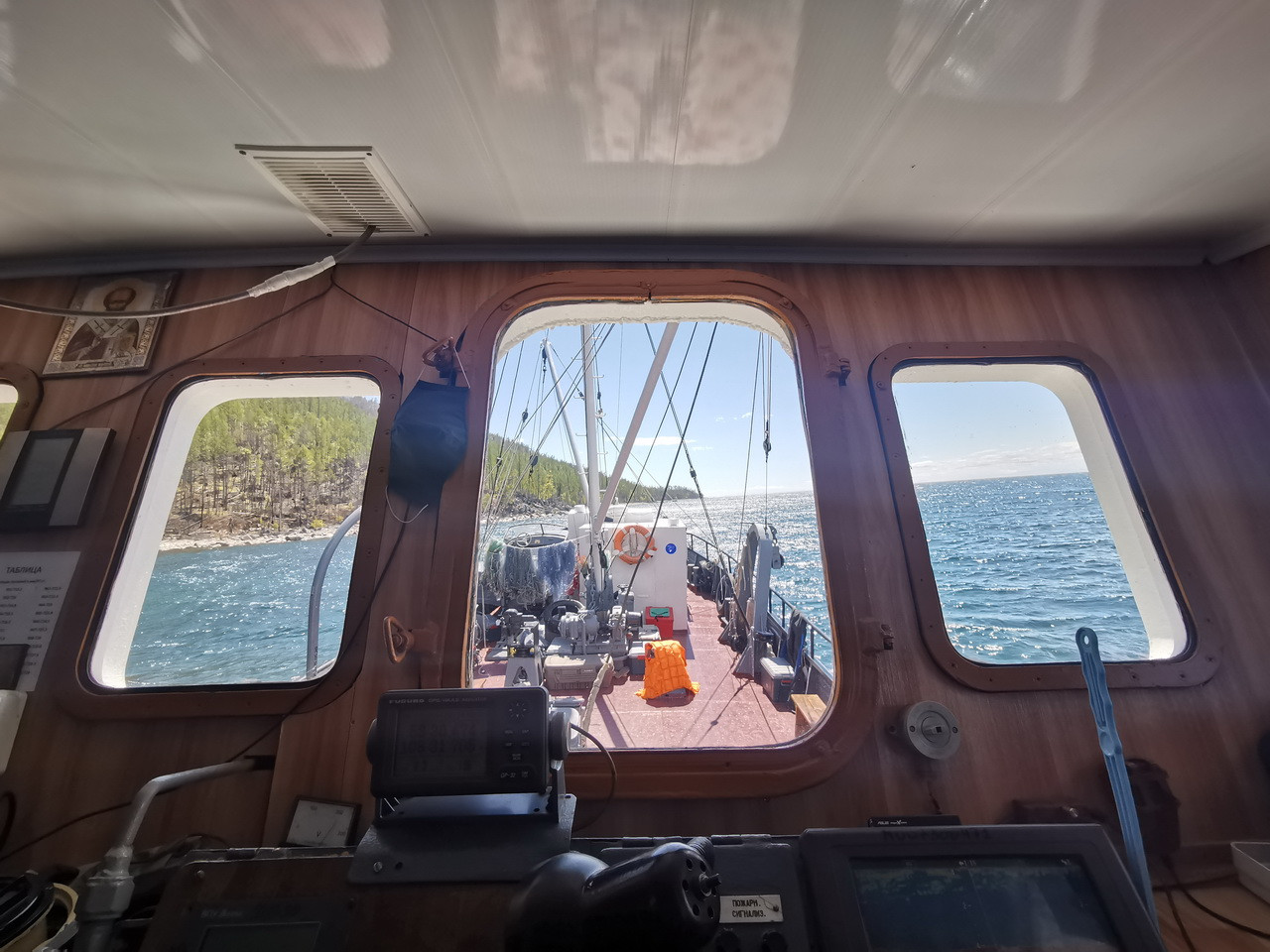Expedition onboard RV “G. Titov” from June 01 to 11, 2020
The expedition within the framework of the programs “Molecular Ecology and Evolution of Living Systems in Central Asia under Global Environmental Changes” and “Assessment and Forecast of the Ecological State of Lake Baikal and Adjacent Territories under Conditions of Anthropogenic Impact and Climate Change” was carried out onboard RV “G. Titov”, June 01-11, 2020.
The aim of the expedition was to continue a series of expeditions around Lake Baikal for long-term monitoring (from 2015 to 2020) to assess the state and changes in the communities of benthic microorganisms from the shallow-water zone of Lake Baikal.
To monitor the state of the disease of Baikal endemic sponges, a quantitative collection of sick individuals was carried out along the transects (Varnachka, Ulanovo, the Malyie Olkhonskiye Vorota Strait, Ukhan, Elokhin, Turali, Nizhnee Izgolovie Cape of the Svyatoi Nos Peninsula, Aya Bay, and Listvinnichny Bay). During the expedition, 289 sick sponges of various species were collected. In the collected species, types of lesions were visually characterized, and their species was determined based on the morphology of the spicules and the skeleton.
Along all transects, including the stations, scuba divers analyzed the projective cover degree of the bottom with sick and healthy sponges taking into account their body shape (branching, crustaceous and globular).
Additionally, along all transects, water was sampled for further hydrochemical analysis (from the surface and near-bottom water layer). A total of 118 samples were taken. Dissolved oxygen, pH and electrical conduction were determined at the sampling sites. Water samples to study nutrients and organic carbon were preserved and transported to the Laboratory of Hydrochemistry and Atmosphere Chemistry.
The samples of the Lubomirskia baicalensis and Baikalospongia bacillifera sponges were collected to analyze the diversity of viruses in the composition of the associated communities. To prevent contamination, scuba divers carried out the sampling directly in habitats of sponges into sterile 50 ml vials and/or 500 ml containers. Samples of sick and healthy sponges were taken for a comparative analysis of the composition of the associated communities in sponges with different lesions. The primary preparation of sponge samples was carried out immediately after the collection: sponges were twice washed with filtered Baikal water, homogenized in the SM buffer, divided into 5 ml aliquots, and frozen in liquid nitrogen and stored at -20°С. Water samples were taken at the Varnachka, Ukhan, Elokhin, and Listvyanka stations (20 l each) to analyse the viral communities. The primary preparation of water samples was carried out: the samples were filtered through bacterial filters (0.22 µm) and, after the addition of iron chloride, through 1.0 µm filters.
104 samples of the L. baikalensis sponges were collected for population genetic research (Ulanovo – 32, Nemnyanka – 40, and Verkhnee Izgolovie Cape of the Svaytoy Nos Peninsula – 32), and 42 samples were collected for transcriptome analysis of sick and healthy members of this species (Ukhan – 24 and Listvyanka – 18). Sponges of different species (36 samples) were also collected for transcriptome analysis (Varnachka – 10. Ukhan – 1, Elokhin – 13, Nizhnee Izgolovie Cape of the Svyatoy Nos Peninsula – 1, and Listvyanka – 11).
Видео для Internet Explorer---------------




